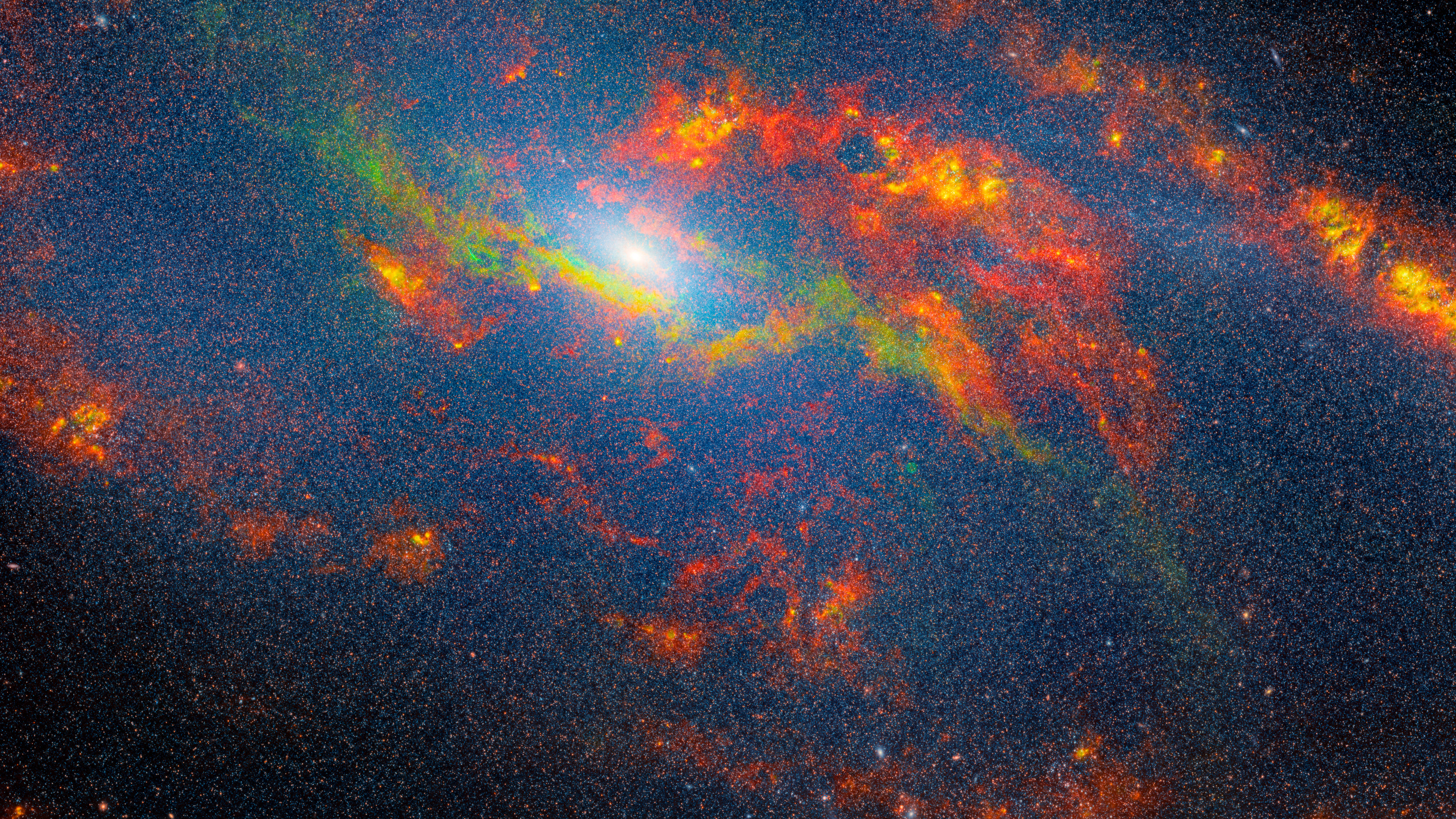
The James Webb Space Telescope continues to bring us stunning, high-quality images of the distant parts of the universe. The latest image to be released is an apocalyptic-scale photograph that allows us to gaze into a black hole at the center of a spiral galaxy, some 23 million light-years away from Earth.
Messier 106, or NGC 4258 as it is also known, is one of the nearest and brightest spiral galaxies to us, and was first discovered in 1781. The black hole at its center is a particularly active one, we are told, "actively gobbling up material".
This image was captured with Webb’s Near-InfraRed Camera (NIRCam)and shows galaxy’s bright central region that is dominated by the light emitted by dust and gas as it falls into the black hole.
"The blue regions in this image reflect stellar distribution throughout the central region of the galaxy," says the European Space Agency. "The orange regions indicate warmer dust and the stronger red hues represent colder dust. The teal, green and yellow tones near the center of the image depict varying gas distributions throughout the region".
The James Webb Space Telescope was launched in December 2021 - and started beaming back its incredible color images back to us in July 2022, using an array of four infrared cameras.







